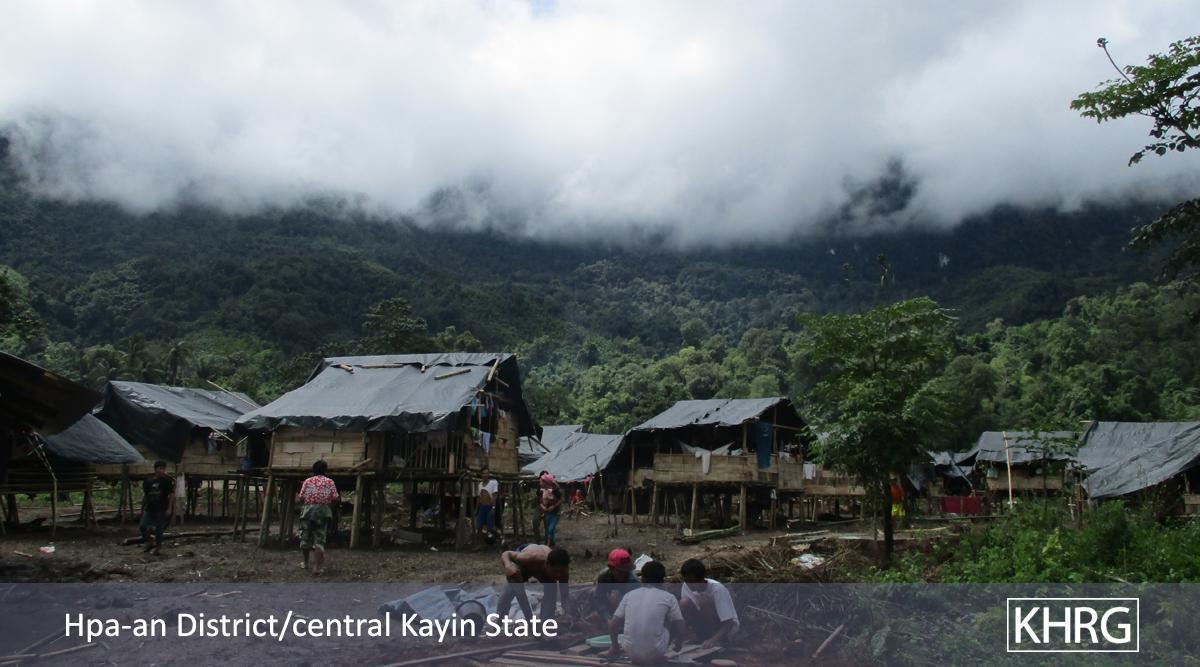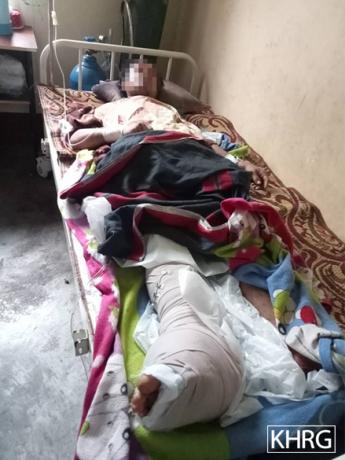This Short Update describes events occurring in T’Nay Hsah Township, Hpa-an District during the period between January to June, 2023. In January 2023, villagers’ cows stepped on landmines three times in Htee Wah Blaw village tract, T’Nay Hsah Township. These landmines are suspected to have been planted by the State Administration Council (SAC). After the incident, the SAC instructed villagers from B--- village and P-- village not to release their cows. If the cows were to step on landmines again, the cows’ owners would have to pay a penalty. In another incident that took place on June 13th 2023, at around 2:00 pm, a 41-year-old man from N---village, Yaw Ku village tract, T’Nay Hsah Township, stepped on a landmine as he was going to a deserted Democratic Karen Buddhist Army (DKBA) army camp in the forest to collect some wild plants. He sustained an injury to his right foot and was sent to T--- hospital, Pee T’Hka village tract, Ta Kreh Township, Hpa-an District, for medical treatment.[1]
On February 8th 2023, Saw[2] M---, a 53-year-old village head from B--- village, Htee Wah Blaw village tract[3], T’Nay Hsah Township, Hpa-an District explained how villagers’ cows had stepped on landmines three times in his area, killing some and injuring others. The first time, in January 2023 [unknown date], one of the cows owned by a villager named A--- stepped on a landmine at A’Leh Bo Deh camp [an State Administration Council (SAC)[4] camp] and broke a leg. The second time, in January 2023 [unknown date], one of the cows of a villager named K--- was killed by a landmine near Light Infantry Battalion (LIB)[5] #356 located in Thin Gan Nyi Nuang military camp, Myawaddy Township. The third time, on January 24th 2023, three cows owned by a villager named D--- were injured and two of his cows were killed by a tripwire mine explosion. This tripwire mine was set up by SAC LIB #357 beside Saw E---'s farm. During this time [March to June] it is common for villagers to release their cows [into fields]. The SAC had planted landmines near the villagers’ farms but did not inform the villagers about the landmines, and so the villagers released their cows unaware of the mine contamination. After the landmine explosions, the SAC soldiers asked to whom the cows belonged but no one answered because they knew the owner would be made to pay for the landmines [that exploded]. After these incidents, the SAC informed villagers from B--- village and P--- village that the cows’ owners would have to pay for landmines if their cows stepped on landmines again. The SAC soldiers also restricted some areas [in Htee Wah Blaw village tract] so that villagers could not let their cows pasture there.
On June 13th 2023, at around 2:00 pm, Saw U---, a 41-year-old man from N--- village, Yaw Ku village tract, T’Nay Hsah Township, Hpa-an District, stepped on a landmine as he was going to the forest to collect some wild plants from a place near to a deserted Democratic Karen Buddhist Army (DKBA)[6] army camp. His right foot was badly injured in the explosion. With his wounded foot, he travelled back alone from the jungle to a local villager's tent. He was initially taken to the O--- hospital, but they could not provide adequate medical care there. Therefore, he was transferred to T--- hospital, Pee T’Hka village tract, Ta Kreh Township, Hpa-an District, for medical treatment. He has now been discharged from the hospital however he is currently bedridden due to his injury. His inability to work threatens his family's livelihood. The victim was aware of the possibility of landmine contamination in the forest, but in order to support his family and earn some money he went to the forest to collect some wild plants for sale.
Further background reading on the situation of landmines in Southeast Burma can be found in the following KHRG reports:
- Doo Tha Htoo District Situation Update: Killings, landmine injuries, and insecurity in Bilin Township, January to June 2022, July 2023
- ““Why would they target us?”: Exploring patterns of the Burma Army's retaliatory abuses against villagers across Southeast Burma”, June 2023
- Taw Oo District Incident Report: A female villager died in a landmine explosion in Daw Hpa Hkoh Township, January 2023, March 2023
- Hpa-an District
Footnotes:
[1] The present document is based on information received in March to June, 2023. It was provided by a community member in Hpa-an District. who has been trained by KHRG to monitor human rights conditions on the ground. The names of the victims, their photos and the exact locations are censored for security reasons. The parts in square brackets are explanations added by KHRG.
[2] Saw is a S’gaw Karen male honorific title used before a person’s name.
[3] A village tract is an administrative unit of between five and 20 villages in a local area, often centred on a large village.
[4] The State Administration Council (SAC) is the executive governing body created in the aftermath of the February 1st 2021 military coup. It was established by Senior General Min Aung Hlaing on February 2nd 2021, and is composed of eight military officers and eight civilians. The chairperson serves as the de facto head of government of Burma/Myanmar and leads the Military Cabinet of Myanmar, the executive branch of the government. Min Aung Hlaing assumed the role of SAC chairperson following the coup.
[5] An SAC Light Infantry Battalion (LIB) comprises 500 soldiers. However, most Light Infantry Battalions in the SAC are under-strength with less than 200 soldiers. Yet up to date information regarding the size of battalions is hard to come by, particularly following the signing of the NCA. LIBs are primarily used for offensive operations, but they are sometimes used for garrison duties.
[6] The Democratic Karen Buddhist Army (DKBA) was originally formed in 1994 as a breakaway group from the Karen National Liberation Army (KNLA). Since its separation from the KNLA in 1994, it was known to frequently cooperate with and support the Tatmadaw in its conflict with the KNLA. The original group underwent major change in 2010 as the majority of the original DKBA was transformed into the Border Guard Force (BGF), which is under the control of the Burma/Myanmar government. The remainder of the original DKBA formed a smaller splinter group in 2010 and then changed its name in 2012 from the Democratic Karen Buddhist Army to the Democratic Karen Benevolent Army. Following this major change in 2010, the original DKBA is considered to no longer exist as a distinct entity as it has now been submerged within the BGF. This original DKBA (Buddhist) (1994 – 2010) should not be confused with either the DKBA (Benevolent) (2010 – present) which was formed as a breakaway group from the original DKBA, or with the DKBA (Buddhist) (2016 – present) which was formed as a splinter group from the DBKA (Benevolent) (2010 – present) in 2016. For more information on the formation of the DKBA, see “Inside the DKBA,” KHRG, 1996.






